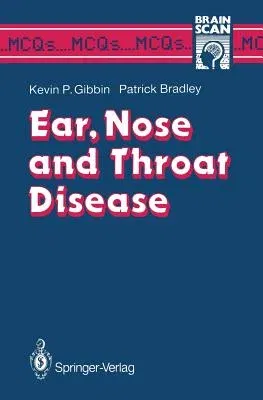This book was conceived as a means of learning by inquiring-self testing
carried out conscientiously is an effective way of acquiring knowledge.
A wrongly answered question should stimulate the examinee to return to
his books to discover the correct answer, although it should be noted
that in a number of cases we have annotated brief comments. We hope the
book will be of benefit to a number of learners in otolaryngology:
medical students, house officers and nurses under- going post-basic
training. We hope also that it may help general- practitioner trainees,
for whom otolaryngology presents a significant workload. We recognise
that this book must be complementary to standard textbooks but our
aspirations remain that the student will gain even greater benefit from
his efforts by spending some time in self assessment. Nottingham Kevin
P. Gibbin 1989 Patrick J. Bradley Contents 1. Ear. . . . . . . . . . . .
. . . . . . . . . . . . . . . . . . . . . . . . . 2 2. Nose. . . . . . .
. . . . . . . . . . . . . . . . . . . . . 60 . . . . . . . 3. Throat. .
. . . . . . . . . . . . . . . . . . . . . . . . . 98 . . . . . . . 1.
Ear Questions Q. l. l In a normal ear a. the membrana tensa and membrana
f1accida both contain three distinct layers: epithelial, fibrous and
mucosal b. the long process of the incus can never be seen through an
intact drum c. the tip of the long process of the incus articulates with
the head of the stapes via a synarthrosis d. the incudomallear joint is
a synovial joint e.


